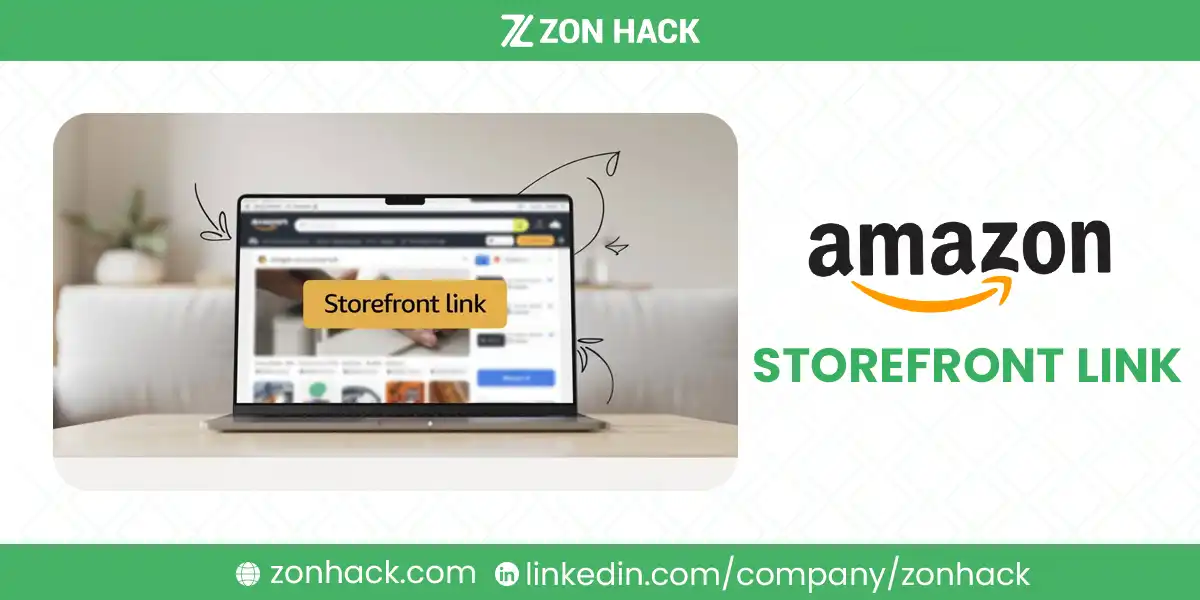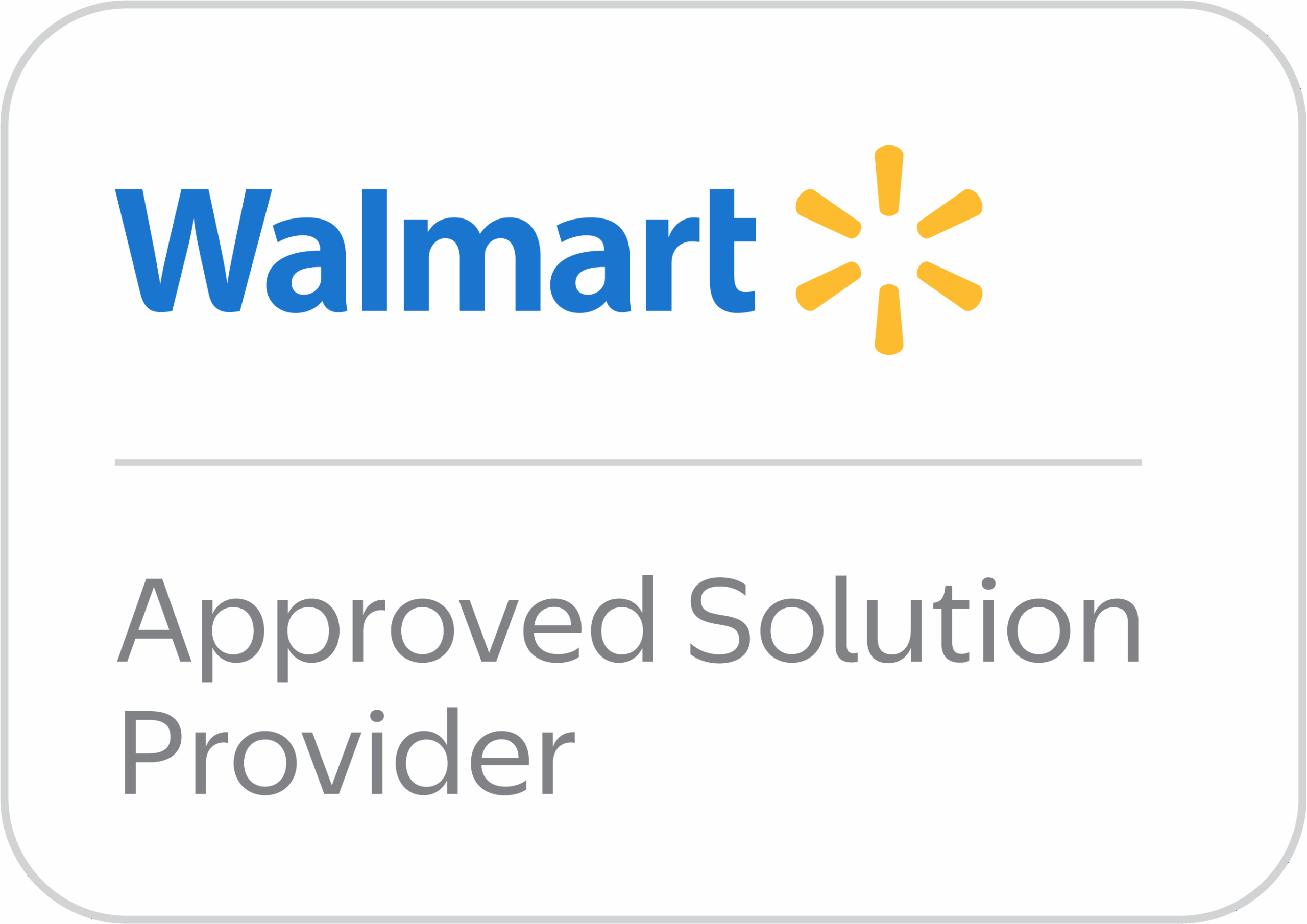Your Brand’s Digital Home Inside Amazon – and Why It Matters
If you’re an Amazon seller trying to build a real brand, not just chase random sales, your Amazon Storefront link is more important than you think.
This one link can change how shoppers see you.
It’s not just another URL. It’s your storefront, your brand page, your shop window. And unlike most product listings, which blend into search results, your Amazon Storefront is all yours — customizable, branded, and designed to convert.
If you’re running influencer campaigns, sending out email newsletters, or advertising off Amazon — this is the link you want to share.
And if you’re working with a team like ZonHack, it’s one of the best tools in your Amazon arsenal to grow traffic, build trust, and scale sales beyond single listings.
Let’s unpack exactly what this link is, how to get one, and how to turn it into a branded revenue engine.
What Is an Amazon Storefront?
An Amazon Storefront (often called a “brand store”) is a customizable mini-website inside Amazon. Think of it as your branded corner of the marketplace — built specifically for registered brands.
Unlike typical product detail pages, which Amazon controls and displays uniformly, your Storefront is yours to design. You can:
- Add your logo, brand colors, and lifestyle imagery
- Group your products into categories
- Add video banners, carousels, and even seasonal promotions
- Tell your brand story visually
- And most importantly — get a unique sharable link to the entire experience
This is your Amazon Storefront link.
It usually looks something like this:
https://www.amazon.com/stores/YourBrandName/
Or, in some cases:
https://www.amazon.com/yourbrand
Only sellers enrolled in Amazon’s Brand Registry program can create one. That means you’ll need a registered trademark and approval from Amazon to unlock this feature — but once you do, it opens the door to professional brand building on Amazon.
What Is an Amazon Storefront Link?
Let’s be specific.
Your Amazon Storefront link is the URL that leads directly to your brand’s Amazon Storefront.
Think of it like a branded homepage inside Amazon.
It’s the single link that shows off all your products, categories, and visual branding in one place — without distractions like competitor ads or Amazon’s algorithm reshuffling your listings.
Unlike your product links, which change by ASIN and are often long and messy, this is clean and easy to remember. It’s the link you can confidently use in:
- TikTok influencer videos
- Instagram bio links
- Email campaigns
- Press mentions
- External ads on Google or Facebook
At ZonHack, we often treat this link as the central destination for traffic. It’s where all roads lead — so we make sure the store is beautifully designed, fully optimized, and built to convert.
Why Your Amazon Storefront Link Matters
Here’s the truth: product listings don’t build brands. They sell individual units.
But Amazon Storefronts? They tell stories.
Your storefront link brings shoppers into a curated experience where they can explore your entire catalog, understand your brand’s mission, and see your products the way you want them seen.
Here’s what it can do:
- Build Trust – A cohesive, professional Storefront instantly boosts credibility
- Increase AOV (Average Order Value) – Shoppers often add multiple products when they explore grouped categories
- Improve Conversion Rates – A Storefront with rich visuals and clear branding performs better than a plain product page
- Create a Traffic Hub – One central link for all external campaigns
- Enable Analytics – Amazon gives you data on Storefront traffic, clicks, and conversions
And unlike typical Amazon product pages, there are no competitor ads on your Storefront. That alone is a massive edge.
How to Get Your Amazon Storefront Link
Getting this link isn’t automatic. But it’s straightforward once you follow the right steps.
1. Enroll in Amazon Brand Registry
You’ll need:
- A registered trademark
- An active Amazon Seller Central account
- Brand Registry application approval
Amazon Brand Registry is free, but trademark registration takes time (usually 6–12 months unless you use IP acceleration). ZonHack can guide you through the process if you haven’t done it yet.
2. Open the Store Builder Tool
Once approved, log into Seller Central and head to:
“Stores” → “Manage Stores” → “Create Store”
You’ll be prompted to:
- Select your brand
- Upload your logo
- Choose a layout (grid, marquee, product-focused)
- Build out pages (Home, Categories, Deals, etc.)
This is where branding comes alive. Use high-quality lifestyle photos, include value-focused messaging, and make it easy to navigate.
ZonHack’s design team creates layouts that are not only beautiful, but also built to convert. That means product prioritization, bundle sections, optimized copy, and mobile-first designs.
3. Publish and Receive Your Link
Once submitted, Amazon typically approves your Storefront within 72 hours.
You’ll now have a live, unique link you can use for marketing and promotions.
It’s your official Amazon brand homepage.
Where to Use Your Storefront Link
This link isn’t just a branding play — it’s a conversion tool.
Smart sellers use their Storefront link in every part of their marketing stack. Here are some of the best placements:
- Influencer Campaigns: Instead of linking to a single product, send influencers to your Storefront so customers can browse the full catalog.
- Google Search Ads: Use your Storefront as a branded landing page for non-Amazon campaigns. It works well with keyword-rich campaigns like “buy [brand] supplements.”
- TikTok and Instagram Bio: A clean, brand-forward destination for mobile traffic.
- Email Marketing: Product launches, seasonal promotions, and restock alerts all link back to the storefront.
- Amazon Ads – Sponsored Brands: These ads can be linked directly to your Storefront instead of a product page. When done right, CTR and conversion rate improve.
At ZonHack, we treat this link as a conversion asset — not just a static URL.
We build entire campaigns around it — with paid traffic, influencer funnels, and remarketing strategies that track clicks and drive real ROI.
Benefits of a Well-Optimized Amazon Storefront
An Amazon Storefront isn’t magic on its own. What matters is how it’s used and optimized.
Here’s what a well-built Storefront brings to the table:
1. Brand Authority
Customers don’t just want cheap products — they want real brands. A clean Storefront with real photography, a brand voice, and collections instantly raises your status.
2. Higher Conversions
A good Storefront reduces friction. It guides the customer, groups similar items, and leads to quicker, more confident buying decisions.
3. Increased Average Order Value
Bundled sections, “You May Also Like” rows, and category pages help shoppers explore — and often buy more.
4. Mobile Optimization
Over 65% of Amazon traffic comes from mobile. A good Storefront loads fast, looks clean, and navigates easily on small screens. ZonHack makes sure of that.
5. Attribution + Analytics
With Amazon’s Store Insights, you can see:
| Metric | What It Tells You |
| Daily Visitors | How much traffic your link is generating |
| Views per Page | Which categories or product groups get clicks |
| Sales Attribution | Which traffic source drove conversions |
| Add-to-Cart Rate | How engaging your Storefront is |
ZonHack uses this data to refine campaigns, test page structures, and track multi-channel ROI — so your Storefront becomes a living, evolving asset.
How to Optimize Your Amazon Storefront for Sales
Getting your Storefront link live is the first step. But designing it to convert? That’s where the real advantage lies.
Here’s how we approach optimization at ZonHack — and what you should focus on if you want your Storefront to become a high-performing, branded sales channel.
1. Start With a Strong Hero Section
First impressions matter. The top banner of your Storefront — often called the hero section — sets the tone. It should be:
- Visually on-brand
- Clean and uncluttered
- Mobile-friendly
- Paired with a clear headline or call to action
Avoid generic slogans. Speak directly to your customer. For example:
“Clinically Backed Skincare, Made for Sensitive Skin” tells your story in seconds.
2. Create Product Collections That Make Sense
Don’t just list your products in a random grid.
Group them by intent or benefit — not just by type.
For example, if you sell fitness gear:
- “For Home Workouts”
- “Beginner’s Essentials”
- “Back in Stock Favorites”
These collections help users self-select and guide their journey. They also work beautifully for seasonal campaigns or bundles.
3. Add Lifestyle Content, Not Just Product Images
A Storefront is more than a catalog. It’s where your brand lives.
Include lifestyle photos, short video banners, or even “how it works” visuals that walk buyers through use cases. Let customers imagine your product in their daily life.
ZonHack often includes video headers or UGC-style photos to increase dwell time and engagement.
4. Use SEO Inside Your Storefront
Yes — Amazon Storefronts are indexable.
Make sure your titles, section headers, and alt tags (on images) include relevant keywords. These can help boost visibility both on and off Amazon.
We’ve seen well-structured Storefronts rank for branded and even mid-tail keywords in Amazon search results — and sometimes even on Google.
Driving Traffic to Your Storefront Link
An Amazon Storefront on its own won’t generate traffic. You need a promotion plan.
Here’s how top brands — and our team at ZonHack — drive traffic to these high-converting links.
Influencer Campaigns (Especially TikTok Shop)
When working with influencers or creators, don’t send traffic to a single product. Send them to your Storefront.
This gives shoppers room to browse and often results in more units per session. Plus, creators can show multiple products at once.
We also integrate custom sub-links for influencer tracking, so you know exactly who drove what.
Google Ads
Your Amazon Storefront acts like a landing page. With the right keyword targeting, you can run Google Search campaigns to it — especially for branded search terms.
Example:
Search “Planty Pots Amazon” → First result = their Storefront.
This method is powerful, low-cost, and high-converting if done right.
Amazon Sponsored Brand Ads
These ads are designed to promote your brand — not just your product.
They appear at the top of search results and can link directly to your Storefront, not a product page. This is one of the most underutilized ad formats.
ZonHack creates Sponsored Brand campaigns that drive users to tailored Storefront pages (e.g. “New Arrivals” or “Gifting Collections”), increasing relevance and return.
Email and SMS Campaigns
If you’re building a customer list (and you should be), use your Storefront link for:
- Product launch emails
- Holiday bundles
- Restock alerts
- VIP collections
This creates a familiar, branded experience for returning customers — and increases lifetime value.
Common Amazon Storefront Mistakes to Avoid
Even strong brands sometimes get it wrong. These are some of the most common errors we see during ZonHack audits.
1. Treating It Like a Catalog Dump
Just uploading products and calling it a day won’t work. A Storefront needs structure, storytelling, and conversion strategy.
Think of it as your website — not a spreadsheet.
2. Forgetting Mobile Users
Over 65% of Amazon traffic comes from mobile. If your Storefront looks cluttered or unreadable on a phone, it’s losing money.
Always preview every page on mobile before publishing.
3. Missing Out on Store Insights
Amazon gives you analytics. Use them.
Look at:
- What pages people land on
- Which collections they click
- What drives the most sales
ZonHack builds quarterly Storefront performance reports to identify weak areas and growth opportunities — something many sellers never even look at.
How ZonHack Builds & Scales High-Performance Storefronts
Here’s the part we specialize in: turning Storefronts into scalable brand engines.
If you’re a growing seller, this is where you want support — not just templates.
Here’s what ZonHack does differently:
1. Brand-First Strategy
We don’t start with what you sell — we start with why people buy. Then we build messaging and Storefront layouts that speak to real human intent.
This creates emotional resonance — not just clicks.
2. Advanced Design & CRO
Our creative team designs with conversions in mind. That means:
- Mobile-first layouts
- Scroll pacing
- Conversion-focused collections
- Call-to-action testing
We treat the Storefront like a funnel, not a gallery.
3. Data-Backed Iteration
Each ZonHack Storefront comes with a quarterly performance audit. We track traffic, sales by page, collection engagement, and even bounce rate.
Then we test headlines, imagery, product order, and layout structure to improve conversions.
This keeps your storefront evolving with your brand and market.
4. Integration With Multi-Channel Campaigns
ZonHack builds influencer, paid ads, and remarketing campaigns that all point to your Amazon Storefront. We track performance across platforms and connect everything to Storefront insights.
It’s not just about building a link — it’s about what you do with it.
Frequently Asked Questions
Do I need Brand Registry to get a Storefront link?
Yes. You must be enrolled in Amazon Brand Registry to create a Storefront and get a unique link.
Can I customize my Storefront URL?
Partially. Amazon gives you a brand-friendly URL, but it’s based on your registered brand name. You can’t pick a totally custom path, but it’s clean and easy to share.
Can I run ads to my Amazon Storefront?
Absolutely. Both on-Amazon ads (like Sponsored Brands) and off-Amazon ads (like Google, TikTok, Instagram) can drive traffic to your Storefront link.
Will ZonHack build my Storefront for me?
Yes. ZonHack offers full Amazon Storefront setup, branding, and optimization services — plus strategy for multi-channel promotion. We can take care of it end-to-end.
Bottom Line: Your Storefront Link Is a Growth Lever — Use It
Your Amazon Storefront link isn’t just a convenience — it’s a strategic sales and branding tool.
It centralizes your traffic, elevates your brand, and opens up powerful advertising opportunities. But like most things in eCommerce, it only performs if you treat it with intention.
When done right — with branding, optimization, and traffic in sync — your Amazon Storefront becomes a growth asset, not just a nice-to-have.
At ZonHack, we specialize in building and scaling Storefronts that don’t just look good — they sell better.
Need Help Building or Optimizing Your Amazon Storefront?
Let ZonHack handle the strategy, design, and performance optimization — so you can focus on growth.




